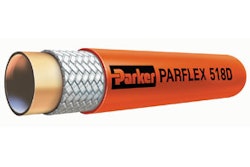As manufacturers look to cut costs in the post-Great Recession business climate, the desire to become more energy efficient has become more prevalent among businesses of all sizes and types. Many find themselves investigating the ways in which they can address energy issues and learning about technology designed to help them achieve their energy goals. What are the relevant questions that they should be asking? Where are they falling short in their energy management strategies? Arun Sinha, Director of Business Development for Opto 22, a manufacturer of energy management and remote monitoring products, recently answered those questions and many more in a conversation with Manufacturing Business Technology.
MBT: In your opinion, what are some of the biggest misconceptions manufacturers have when it comes to evaluating their own energy management strategies?
Sinha: One of the biggest misconceptions is that energy management is a technology issue. In my opinion, energy management is more of a financial issue, or maybe even a people issue. Basic, yet effective, energy management doesn’t take complex technology. Energy consumption and demand, it’s not difficult to measure. It’s amazing what I’ve seen in the past couple years that I have been focusing on energy. Our customer base is measuring every parameter you can imagine for their processes and their machines, but energy typically hasn’t been one of them. It’s not difficult to do. It’s actually a lot easier than some of the other things they are doing. So probably the biggest misconception is that it requires some kind of complex technology. That slows people down from getting started. The actual physical measurement of power or energy, and to deploy something pretty simple, it’s not difficult.
MBT: What are some of the questions manufacturers should be asking when trying to evaluate their energy management?
Sinha: I think the fundamental question is: Does our organization have energy visibility? What I mean is, do we know how and when our energy is being consumed in real time? Do we have a visualization of that? Often what slows people down or prevents them from getting things started is they say they have a system (such as an EAM system) in place. As a result, they think they have everything we need. Well, that’s true. But often those systems are closed, behind the scenes, or under the hood. They are programmed. They are doing something. The question to ask is: Does the person who pays that energy bill, who is fiscally responsible for the profitability of the company, do they get that data out of the system in a way that they can understand it? A typical manager wouldn’t approve a major expenditure for a project without a detailed account of where the money is being spent. So why isn’t energy accounted for in the same detailed manner?
MBT: When manufacturers see a need to make some improvements, what are some of the key things they need to think about before actually investing in some sort of technology?
Sinha: I love this question because it brings out two points I feel really strongly about.
There’s a tendency to start bottom-up. Let’s go and instrument everything possible in the facility that’s an energy consumer, instrument it all from the bottom, and get data from everything. I feel like doing that isn’t necessary. It should be done step-wise from the other direction, top-down. What happens when it is done the other way is it becomes a pretty big investment and can grind things to a halt. With a top-down approach, you can start by just getting a macro-view of the energy consumption in your building, in your facility, in your plant, for the total energy consumption. You can start there and make what I call macro-correlations between the consumption pattern and good real-time data. After that monitoring is done, then you can move it down. Finally, after you’ve done that for awhile, you can start to instrument individual pieces.
The other point that I feel strongly about is when some top-down or high-level monitoring is put in place, it’s important to put operational and behavioral changes first. This means things like tinting windows, using more natural lighting, finding areas that are lit after the shift is over. These are not technological or automation changes. They are operational or behavioral changes.
After awhile you can start to see where there are opportunities to automate, like processes that are repeatable, you get a feel for set points, things like that. Then it is okay to automate. This can take a year, so there is no rush.
MBT: Are there some areas where manufacturers are falling short time and again or certain issues you can see that are common among manufacturers?
Sinha: Yes. The number one thing is accountability. That’s kind of a mean-sounding word, but I don’t mean it that way. There needs to be a correlation between spending and what you’re doing. If larger organizations start to make the energy spend a departmental responsibility, I think that would change things. The people that are running a process or a factory are not the people paying the bill.
There’s a theme here. I kind of think of energy management as more of a financial issue than a technology issue. People running processes, factories, and plants have a lot of things they are graded on or responsible for. Energy hasn’t been one of them.
Energy management has to be something that the leadership of the company believes in, whether their motives are related to sustainability or profitability. I don’t think it’s evil to say ‘We’re doing this to increase our profits.’ Once the top management buys into that, it permeates. Then all the other members of the company start to take ownership if they see that leadership is concerned about it.
MBT: Has there been a bit of a shift in the way companies are approaching energy management?
Sinha: I do think things are changing and they are moving in the right direction. I’ve seen in the past 12 to 18 months the numbers of conversations, the numbers of projects, the dialogues, they are finally starting. The time is right, and I think we are on the cusp of the early-adoption curve.
I think the biggest driver is cost. Most companies are as lean and mean as possible. Energy is the last frontier, and it is a new frontier. I think that people are starting to realize that a small reduction in your energy bill can dwarf all of your other cost savings combined.
Opto 22 manufactures controllers, I/O, solid-state relays, and software products that link electrical, mechanical, and electronic devices to networks and computers. Its customers use Opto 22’s products to monitor, control, and get data from all the machines and devices that are essential to their business. Visit www.opto22.com to learn more.























